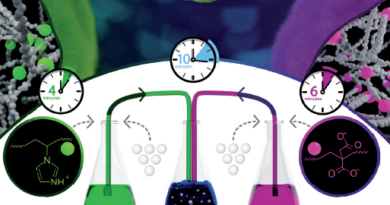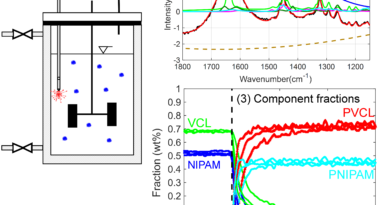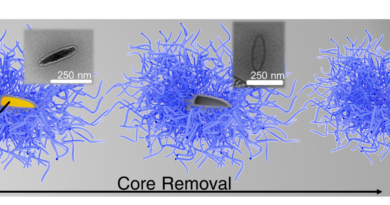Stiffness tomography of ultra‐soft nanogels by atomic force microscopy

The softness of nanohydrogels results in unique properties and recently attracted tremendous interest due to the multi‐functionalization of interfaces. For all these applications, the nanogels’ structure is of great importance but was not investigable on a nanometric scale before. In this article, we study extremely soft temperature‐sensitive ultra‐low cross‐linked (ULC) nanogels adsorbed to the solid/water interface by atomic force microscopy (AFM). Their extreme softness hampers the imaging: the ULC nanogels are “invisible” in the classical 2D height image since a sharp tip fully penetrates these porous networks with very low forces in the range of steric interactions (ca. 100 pN). Nonetheless, the detailed evaluation of Force Volume data allows us to resolve their overall shape and at the same time their internal structure with nanometric and piconewton resolution in all three dimensions. The nanogels exhibit an extraordinary disk‐like and entirely homogeneous but extremely soft structure – even softer than polymer brushes. Moreover, the temperature‐sensitive nanogels can be switched on demand between the ultra‐soft and a very stiff state.
M. F. Schulte, S. Bochenek, M. Brugnoni, A. Scotti, A. Mourran, and W. Richtering
Angew. Chem. Int. Ed. 2020, DOI: 10.1002/anie.202011615
Angew. Chem., 2020, DOI: 10.1002/ange.202011615
Read more about this in the ChemViews Highlight Article:




Pingback: Noteworthy by ChemViews Magazine: “Structure of Ultra‐Soft Nanogels Investigated” – SFB 985
Pingback: SFB 985 on the frontispiece of Angewandte Chemie – SFB 985